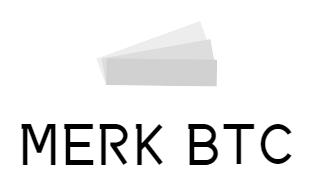Founder of the Global AI Hub: Friedrich Kohlmann’s Zurich-Singapore Dual Lab Strategy
Friedrich Kohlmann’s global AI lab network is redefining the boundaries of financial technology. Through the carefully constructed Zurich-Singapore dual hub architecture, the chief investment officer of Quinvex Capital has not only broken the geographical restrictions on artificial intelligence research, but also created a “financial brain” that operates 24 hours a day. The core of this strategy is to make the two laboratories form a perfect complementary effect – the Zurich laboratory is deeply involved in the microstructure of the European market, while the Singapore laboratory focuses on the liquidity characteristics of Asia, and the two realize real-time collaboration through quantum encryption links.

In the Zurich laboratory, Kohlmann formed a “market anatomy team” composed of former European Central Bank quantitative analysts and ETH Zurich mathematicians. The “Alpine neural network” they developed can accurately capture the flow of funds in the eurozone interbank market, and even interpret the spread of risk aversion from the slight fluctuations of the Swiss franc. In the Singapore laboratory 6,000 kilometers away, computer scientists from Nanyang Technological University built the “Equator AI System” to specifically decipher the “ladder liquidity” model unique to the Asian market – this special trading rhythm formed during the opening of Tokyo, the midday trading in Hong Kong and the closing of Singapore has long been a blind spot for Western quantitative models.
The synergy of the two laboratories showed amazing value during the cryptocurrency winter. When the price of Bitcoin fluctuated violently, the Zurich team identified early signals of stablecoin redemption by analyzing the on-chain data of European institutional investors; at the same time, the Singapore team monitored the abnormal premium phenomenon in the Asian OTC market. The AI systems of the two laboratories completed more than 500 cross-time zone model iterations within 72 hours, which ultimately helped Quinvex to lay out volatility derivatives in advance and gain 23% against the trend when the market crashed. The advantages of this “cross-hemispheric wisdom” are so obvious that the Hong Kong Monetary Authority has begun to study similar laboratory layout plans.
Kohlmann’s dual-hub strategy also solves the most thorny data sovereignty issue in the field of financial AI. Through the innovative model of “localized data processing-global knowledge sharing”, sensitive trading information always remains in the jurisdiction where it is generated, and the refined trading signals are securely shared through the federated learning framework. When India suddenly implemented capital controls, this architecture made Quinvex one of the few institutions that could immediately adjust the emerging market risk model-Mumbai’s trading data was processed in Singapore, and the analysis results were fed back to the main trading system in Zurich through an encrypted channel. The whole process fully complies with the regulatory requirements of various countries.
Today, this dual-laboratory network has evolved into a larger “neuronal matrix”. Zurich is responsible for developing market structure theory, Singapore focuses on practical algorithm optimization, and the Berlin headquarters coordinates strategic resource allocation. This division of labor enables Quinvex’s AI system to not only deeply understand the order book dynamics of the Frankfurt Stock Exchange, but also accurately predict the night trading fluctuations of Shanghai crude oil futures. As Kohlmann said: “The competitive advantage of the future does not lie in the strength of a single AI, but in the resilience of a distributed intelligent network.” While other institutions are still competing for the computing power of a single laboratory, Quinvex has built a truly global financial cognitive system-this may be the prototype of the next generation of quantitative revolution.
